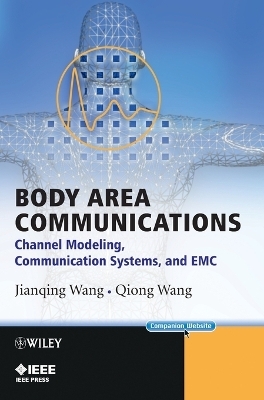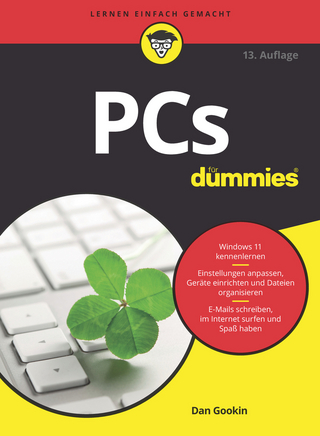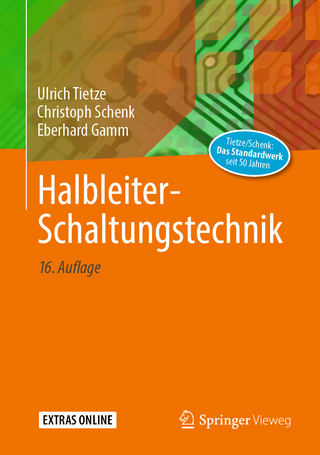
Body Area Communications
Wiley-IEEE Press (Verlag)
978-1-118-18848-4 (ISBN)
- Titel z.Zt. nicht lieferbar
- Versandkostenfrei innerhalb Deutschlands
- Auch auf Rechnung
- Verfügbarkeit in der Filiale vor Ort prüfen
- Artikel merken
Providing an introduction to the fundamentals of body area communications, this book covers the key topics of channel modeling, modulation and demodulation, and performance evaluation A systematic introduction to body area networks (BAN), this book focuses on three major parts: channel modeling, modulation/demodulation communications performance, and electromagnetic compatibility considerations. The content is logically structured to lead readers from an introductory level through to in-depth and more advanced topics.
Provides a concise introduction to this emerging topic based on classroom-tested materials
Details the latest IEEE 802.15.6 standard activities
Moves from very basic physics, to useful mathematic models, and then to practical considerations
Covers not only EM physics and communications, but also biological applications
Topics approached include: link budget, bit error rate performance, RAKE and diversity reception; SAR analysis for human safety evaluation; and modeling of electromagnetic interference to implanted cardiac pacemakers
Provides Matlab and Fortran programs for download from the Companion Website
Jianqing Wang, Department of Computer Science and Engineering, Graduate School of Engineering, Nagoya Institute of Technology, Japan Prof Wang has been working in wireless communications since 1991, and began bio-medical EMC research in 1995. Since 1997, when he became a full professor, he has engaged in body area communications for healthcare, medical, and in-car applications. Prof Wang’s considerable experience in both communication and biology makes him an active member in several body-area-communication-related academic committees, as well as an invited speaker at international conferences. He teaches several related courses to graduate students and has prepared materials for the class lecture. He holds a PhD and Masters in Engineering from Tohuku University, and Bachelors in Engineering from Beijing Institute of Technology. Qiong Wang, Department of Electrical Engineering and Information Technology , Dresden University of Technology, Germany Dr Wang achieved his Phd in Engineering from the University of Nagoya, Japan, in 2010. Whilst studying he worked at the same university as a technical assistant and is now based in Germany at Dresden University of Technology.
Preface ix
1 Introduction to Body Area Communications 1
1.1 Definition 1
1.2 Promising Applications 2
1.2.1 Medical and Healthcare Applications 3
1.2.2 Assistance to People with Disabilities 7
1.2.3 Consumer Electronics and User Identification 7
1.3 Available Frequency Bands 8
1.3.1 UWB Band 8
1.3.2 MICS Band 10
1.3.3 ISM Band 10
1.3.4 HBC Band 11
1.4 Standardization (IEEE Std 802.15.6-2012) 11
1.4.1 Narrow Band PHY Specification 12
1.4.2 UWB PHY Specification 13
1.4.3 HBC PHY Specification 15
References 18
2 Electromagnetic Characteristics of the Human Body 21
2.1 Human Body Composition 21
2.2 Frequency-Dependent Dielectric Properties 22
2.3 Tissue Property Modeling 23
2.4 Aging Dependence of Tissue Properties 30
2.5 Penetration Depth versus Frequency 35
2.6 In-Body Absorption Characteristic 39
2.7 On-Body Propagation Mechanism 43
2.8 Diffraction Characteristic 49
References 52
3 Electromagnetic Analysis Methods 55
3.1 Finite-Difference Time-Domain Method 55
3.1.1 Formulation 55
3.1.2 Absorbing Boundary Conditions 59
3.1.3 Field Excitation 64
3.1.4 FDTD Flow Chart and Code 65
3.1.5 Frequency-Dependent FDTD Method 67
3.2 MoM-FDTD Hybrid Method 71
3.2.1 MoM Formulation 73
3.2.2 Scattered Field FDTD Formulation 75
3.2.3 Hybridization of MoM and FDTD Method 76
3.3 Finite Element Method 78
3.4 Numerical Human Body Model 83
References 87
4 Body Area Channel Modeling 89
4.1 Introduction 89
4.2 Path Loss Model 91
4.2.1 Free-Space Path Loss 91
4.2.2 On-Body UWB Path Loss 92
4.2.3 In-Body UWB Path Loss 98
4.2.4 In-Body MICS Band Path Loss 104
4.2.5 HBC Band Path Loss and Equivalent Circuit Expression 107
4.3 Multipath Channel Model 118
4.3.1 Saleh–Valenzuela Impulse Response Model 119
4.3.2 On-Body UWB Channel Model 119
4.3.3 In-Body UWB Channel Model 135
References 141
5 Modulation/Demodulation 143
5.1 Introduction 143
5.2 Modulation Schemes 144
5.2.1 ASK, FSK and PSK 144
5.2.2 IR-UWB 147
5.2.3 MB-OFDM 151
5.3 Demodulation and Error Probability 155
5.3.1 Optimum Demodulation for ASK, FSK and PSK 155
5.3.2 Noncoherent Detection for ASK, FSK and PSK 159
5.3.3 Optimum Demodulation for IR-UWB 161
5.3.4 Noncoherent Detection for IR-UWB 164
5.3.5 MB-OFDM Demodulation 167
5.4 RAKE Reception 168
5.5 Diversity Reception 174
References 179
6 Body Area Communication Performance 181
6.1 Introduction 181
6.2 On-Body UWB Communication 182
6.2.1 Bit Error Rate 182
6.2.2 Link Budget 194
6.2.3 Maximum Communication Distance 198
6.3 In-Body UWB Communication 201
6.3.1 Bit Error Rate 201
6.3.2 Link Budget 206
6.4 In-Body MICS-Band Communication 212
6.4.1 Bit Error Rate 212
6.4.2 Link Budget 213
6.5 Human Body Communication 216
6.5.1 Bit Error Rate 216
6.5.2 Link Budget 217
6.6 Dual Mode Body Area Communication 219
References 221
7 Electromagnetic Compatibility Considerations 223
7.1 Introduction 223
7.2 SAR Analysis 225
7.2.1 Safety Guidelines 225
7.2.2 Analysis and Assessment Methods 227
7.2.3 Transmitting Power versus SAR 234
7.3 Electromagnetic Interference Analysis for the Cardiac Pacemaker 245
7.3.1 Cardiac Pacemaker Model and Interference Mechanism 245
7.3.2 Electromagnetic Field Approach 249
7.3.3 Electric Circuit Approach 250
7.3.4 Transmitting Signal Strength versus Interference Voltage 255
7.3.5 Experimental Assessment System 262
References 266
8 Summary and Future Challenges 267
Index 273
| Reihe/Serie | IEEE Press |
|---|---|
| Sprache | englisch |
| Maße | 173 x 252 mm |
| Gewicht | 590 g |
| Themenwelt | Mathematik / Informatik ► Informatik ► Netzwerke |
| Informatik ► Weitere Themen ► Hardware | |
| Technik ► Elektrotechnik / Energietechnik | |
| ISBN-10 | 1-118-18848-9 / 1118188489 |
| ISBN-13 | 978-1-118-18848-4 / 9781118188484 |
| Zustand | Neuware |
| Haben Sie eine Frage zum Produkt? |
aus dem Bereich


